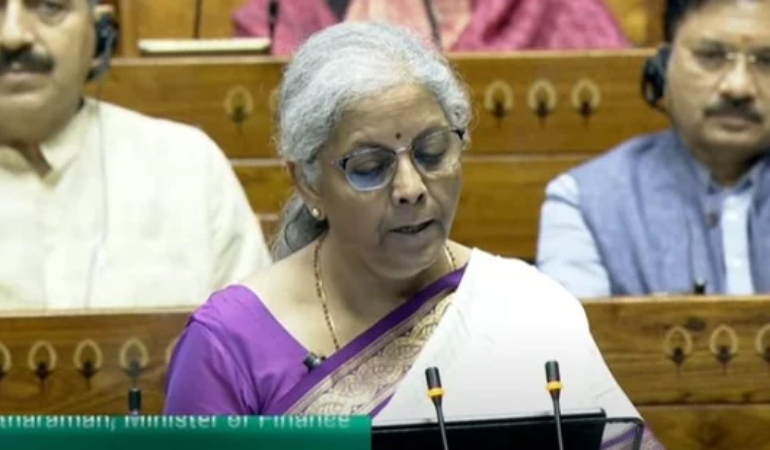The Budget 2024-25, for the first time saw focused measures for climate mitigation.
The announcement of the taxonomy for climate finance is a significant step by the finance minister, Nirmala Sitharaman.
The Government of India announced creation of taxonomy for climate finance to increase the availability of funding for climate change adaptation and greenhouse gas emission reduction.
Finance Minister Nirmala Sitharaman announced the initiative during her Budget speech today. She said that the taxonomy will increase the amount of capital available for climate adaptation and mitigation. It will also help the nation fulfil its climate commitments and make the transition to a greener economy.
The fight against climate change requires an energy transition. This translates to supporting multiple sources of renewable energy. To facilitate the transition, especially with a focus on solar, Ms Sitharaman suggested adding more capital goods to the list of exempt goods to be used in the domestic production of solar panels and cells to facilitate the energy transition.
As a first step, the government intends to release a policy paper outlining suitable energy transition routes that strike a balance between the needs of economic expansion, job creation, and environmental sustainability. This is in-line with the plan to maintain strong and more resource-efficient economic growth, and energy security in terms of availability, affordability, and accessibility, as outlined in the interim budget,.
It plans to introduce a pumped storage policy to support renewable energy integration.
Nuclear in limelight:
After a long gap, nuclear power has found its way in budget announcement.
Ms Sitharaman announced significant initiatives for nuclear energy development in the Union Budget 2024, marking a significant step towards diversifying India’s energy mix.
The goal of this strategic change is to increase the share of nuclear energy in India’s power generation mix.
As per the Department of Atomic Energy, nuclear energy is the fifth-largest source of electricity for India which contributes about 3% of the total electricity generation in the country. India has over 22 nuclear reactors in 7 power plants across the country which produces 6780 MW of nuclear power.
Contextually, the government intends to collaborate with the private sector to establish Bharat Small Reactors (BSRs) and advance small modular reactor technology for nuclear power. The objective of this initiative is to improve India’s energy mix and support domestic nuclear technology.
On a negative note, the FM completely skipped mention about the wind power and other energy segments.
Presently, renewable energy projects can only receive loans of up to Rs 30 crore, even though the RBI has designated it as a priority secto

